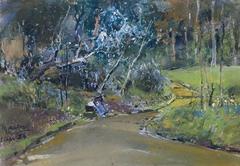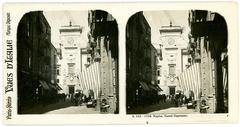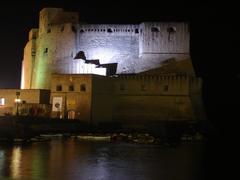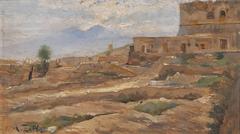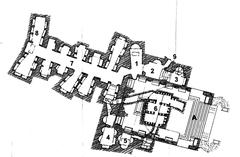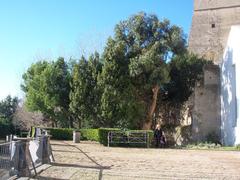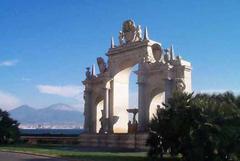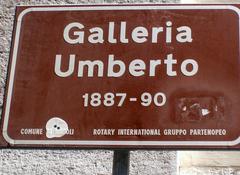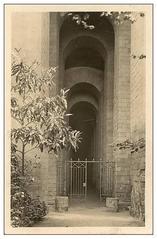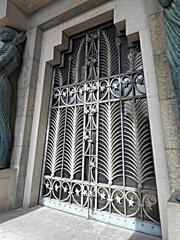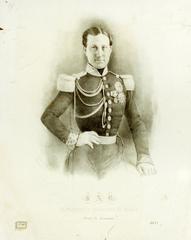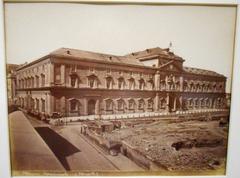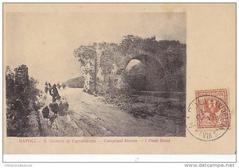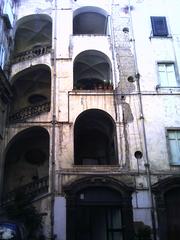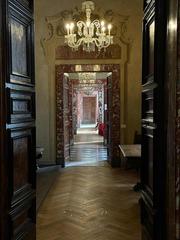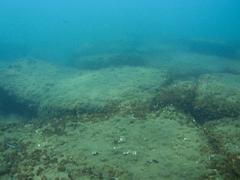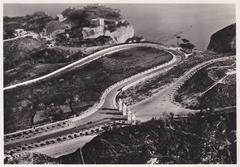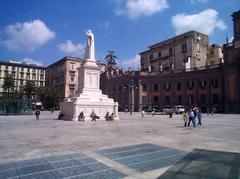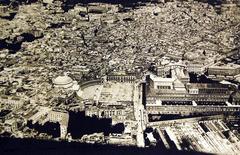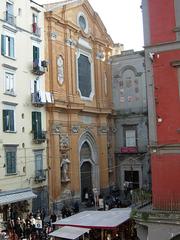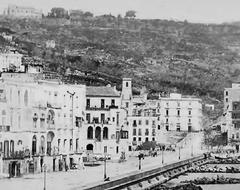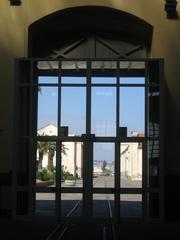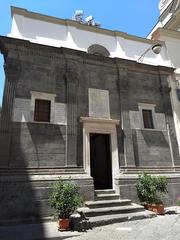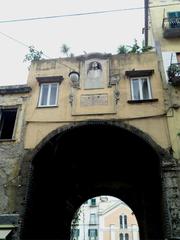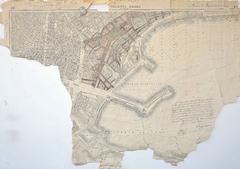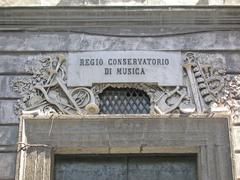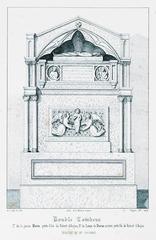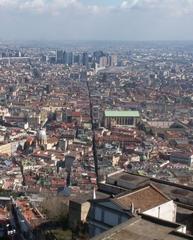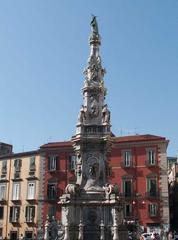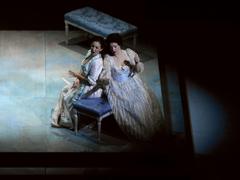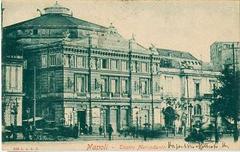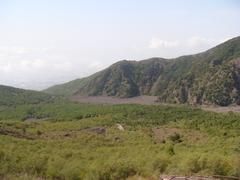
Piazza Trieste e Trento, Naples, Italy: Visiting Hours, Tickets, and Comprehensive Travel Guide
Date: 04/07/2025
Introduction
Piazza Trieste e Trento is a historic and cultural crossroads at the heart of Naples, Italy. Just steps from the iconic Piazza del Plebiscito, this square offers a blend of architectural grandeur, vibrant social life, and a window into centuries of Neapolitan history. From the elegant Teatro di San Carlo and the Royal Palace to the bustling cafés that line its perimeter, Piazza Trieste e Trento invites visitors to experience the essence of Naples. This detailed guide covers the square’s origin, its most significant landmarks, practical visiting information, and tips to help you make the most of your visit (European Ribbon; Napolike; Traveling Tribe; ItalyXP).
Table of Contents
- Origins and History
- Key Landmarks and Architecture
- Cultural and Social Life
- Accessibility and Visiting Hours
- Tickets and Guided Tours
- Practical Tips for Visitors
- Nearby Attractions
- Frequently Asked Questions (FAQ)
- Conclusion
- Sources and Further Reading
Origins and History
17th Century Beginnings
Originally known as Piazza San Ferdinando, the square was established in the 17th century alongside the construction of the Church of San Ferdinando. Its location was strategic, situated near the Palace of the Viceroys, a symbol of Spanish authority in Naples. Over the centuries, the area evolved in response to urban development and the changing needs of the city (European Ribbon).
19th–20th Century Transformations
The demolition of the Palace of the Viceroys in 1837 under King Ferdinand II paved the way for the square’s modern layout, integrating it with the newly expanded Piazza del Plebiscito. The renaming of the square in 1919 to Piazza Trieste e Trento commemorated the annexation of Trento and Trieste to Italy after World War I, marking it as a symbol of Italian unity and national pride (European Ribbon).
Key Landmarks and Architecture
Fontana del Carciofo (Artichoke Fountain)
Installed in 1956, the Artichoke Fountain is a modern addition and serves as the square’s centerpiece. Its artichoke-like sculpture symbolizes Naples’ blend of tradition and innovation. The fountain is especially striking when illuminated at night, making it a favorite for photographers (European Ribbon).
Teatro di San Carlo
Flanking the square, the Teatro di San Carlo is the world’s oldest continuously active opera house (est. 1737), recognized for its neoclassical façade and opulent interiors. It remains a hub of musical excellence, with guided tours and performances available year-round (Traveling Tribe).
- Visiting Hours: Tours typically run from 9:00 AM to 6:00 PM.
- Tickets: Required for tours and performances; book in advance via the official website.
Royal Palace of Naples (Palazzo Reale)
Adjacent to the piazza, the Royal Palace was once the residence of Spanish and Bourbon monarchs. Its Baroque façade and grand interiors, including the National Library, offer a glimpse into royal Neapolitan history.
- Visiting Hours: Tuesday to Sunday, 9:00 AM–7:00 PM. Closed Mondays.
- Tickets: Standard adult ticket ~€10 (2025).
Gran Caffè Gambrinus
This historic café, founded in 1860, has welcomed intellectuals and artists such as Oscar Wilde, Gabriele D’Annunzio, and Ernest Hemingway. Its Belle Époque interiors and Neapolitan pastries make it an essential stop (Traveling Tribe).
Galleria Umberto I
A short walk from the piazza, this 19th-century arcade is renowned for its glass dome, elegant mosaics, and lively boutiques.
Chiesa di San Ferdinando
The Baroque Church of San Ferdinando, from which the original square took its name, stands on the western edge. It boasts ornate interiors and is open for worship and visits during daylight hours.
Cultural and Social Life
Piazza Trieste e Trento is a vibrant “urban living room” for Naples. Its cafés, especially Gran Caffè Gambrinus, are hubs of social and intellectual exchange, reflecting the city’s tradition of lively debate and artistic creativity. The square hosts street performers and public events, especially during festivals and holidays, contributing to its dynamic atmosphere (Traveling Tribe).
The ritual of “caffè sospeso” (suspended coffee) originated here—a tradition where patrons pay for an extra coffee to be given to someone in need, showcasing Neapolitan generosity.
Accessibility and Visiting Hours
- Open Access: Piazza Trieste e Trento is a public square, open 24 hours a day, 7 days a week, with no entrance fee (ItalyXP).
- Mobility: The square is pedestrian-friendly and mostly accessible for visitors with mobility challenges, though some surrounding streets feature cobblestones.
- Restrooms: Available in nearby cafés or within Galleria Umberto I.
Tickets and Guided Tours
- Square: Free access.
- Teatro di San Carlo: Tickets required for performances and guided tours; book via the official website.
- Royal Palace: Entry fees apply; tickets available at the entrance or online.
- Guided Tours: Many city walking tours start from or include the piazza, often combining visits to Naples Underground (Naples Underground) and other historic sites.
Practical Tips for Visitors
- Best Time to Visit: Early morning or late afternoon for a quieter atmosphere; evenings for illuminated views of the fountain.
- Safety: The square is generally safe, but visitors should be mindful of pickpockets, especially during crowded events (World Travel Connector).
- Dress Code: No formal requirement for the square; modest attire for churches and the Royal Palace.
- Photography: Ideal light during golden hours; the Artichoke Fountain and Teatro di San Carlo are popular subjects.
Nearby Attractions
- Piazza del Plebiscito: Naples’ largest square, hosting major events.
- Via Toledo: A bustling shopping street.
- Basilica di San Francesco di Paola: Neoclassical church with a grand colonnade.
- Waterfront Promenade: Easily accessible for a scenic walk.
Frequently Asked Questions (FAQ)
Q: What are the visiting hours for Piazza Trieste e Trento?
A: The square is open 24/7 as a public space.
Q: Is there an entrance fee to the square?
A: No, access is free; specific attractions nearby may require tickets.
Q: How do I get there by public transport?
A: The nearest metro stop is Toledo (Line 1), about a 10-minute walk away; several bus lines serve Via Toledo and Via San Carlo.
Q: Are guided tours available?
A: Yes, many walking tours include the piazza and surrounding attractions.
Q: Is the area safe for tourists?
A: Yes, especially during the day and early evening; exercise standard caution regarding valuables.
Conclusion
Piazza Trieste e Trento is a microcosm of Naples’ enduring vitality, offering rich layers of history, stunning architecture, and a spirited social scene. Its central location provides easy access to the city’s most renowned landmarks, while its cafés, fountain, and lively ambiance promise a memorable experience for every visitor. Whether you are drawn by history, culture, or simply the joy of people-watching in a classic Neapolitan setting, this square is an essential stop on any Naples itinerary.
For current schedules, ticket bookings, and immersive audio tours, download the Audiala app and refer to official sources.
Sources and Further Reading
- European Ribbon – Piazza Trieste e Trento: The Historic Heart of Naples
- Napolike – Naples Attractions
- Traveling Tribe – What to Do in Naples, Italy
- ItalyXP – Best Naples Squares
- Naples-Napoli.org – Piazza Trieste e Trento
- Naples Underground Official Website
- World Travel Connector – Best Things to Do in Naples, Italy
For more travel inspiration and practical advice, explore our related articles on Naples’ historic squares and cultural sites.

